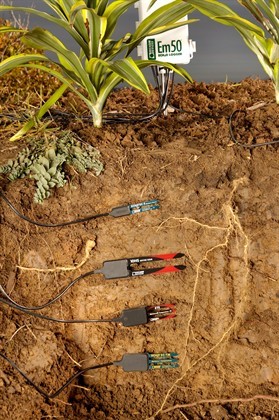how to convert gravimetric soil water content to volumetric soil water content
 The amount of water or moisture in soil can be measured as either gravimetric soil water content (GWC) or volumetric soil water content (VWC).
The amount of water or moisture in soil can be measured as either gravimetric soil water content (GWC) or volumetric soil water content (VWC).
But what is GWC and VWC? And how do you convert GWC to/from VWC?
related articles
- The Soil Water Compendium
- 5 Common Mistakes When Measuring Soil Moisture
- How to Calibrate Soil Moisture Sensors
The easiest way to think of GWC and VWC is that GWC is related to the mass of water and soil, whereas VWC is related to the volume of water and soil.
GWC is the mass of water per mass of dry soil in a given sample. To determine GWC, collect soil sample from the field, weigh that soil then dry it in the oven at 105°C for at least 3 days (or, more precisely, weigh the soil periodically until there is no more loss in weight which indicates that all of the water has been dried from the sample). The equation for GWC (θg) is:
θg = (Wet - Dry) / Dry (Equation 1)
where Wet is the weight of the soil sample from the field and Dry is the weight of the dry soil sample.
VWC is the volume of water per volume of soil. To determine VWC, you will need to measure Wet and Dry as described above for GWC. You will also need to know the bulk density of the soil sample (BD).
In this case, it is not enough just to collect a handful of soil sample from the field. It is better practice to collect a sample of soil in a known volume, such as a metal cylinder. The BD is the ratio of Dry to the volume of your sampler. (A You Tube video at the bottom of this article outlines how to collect soil samples to measure soil bulk density.) The equation for VWC (θv) is then given by:
θv = θg * BD (Equation 2)
Soil scientists also incorporate the density of water (WD) into θv as:
θv = θg * (BD / WD) (Equation 3)
However, the value of WD is close to 1 and is typically ignored when calculating θv.
In summary, Equation 1 is used to calculate gravimetric soil water content and Equation 2 is used to calculate volumetric soil water content.
related equipment
- Soil moisture sensors, meters and data loggers
- Soil water potential sensors and meters
- Soil water research equipment
how to measure soil bulk density
